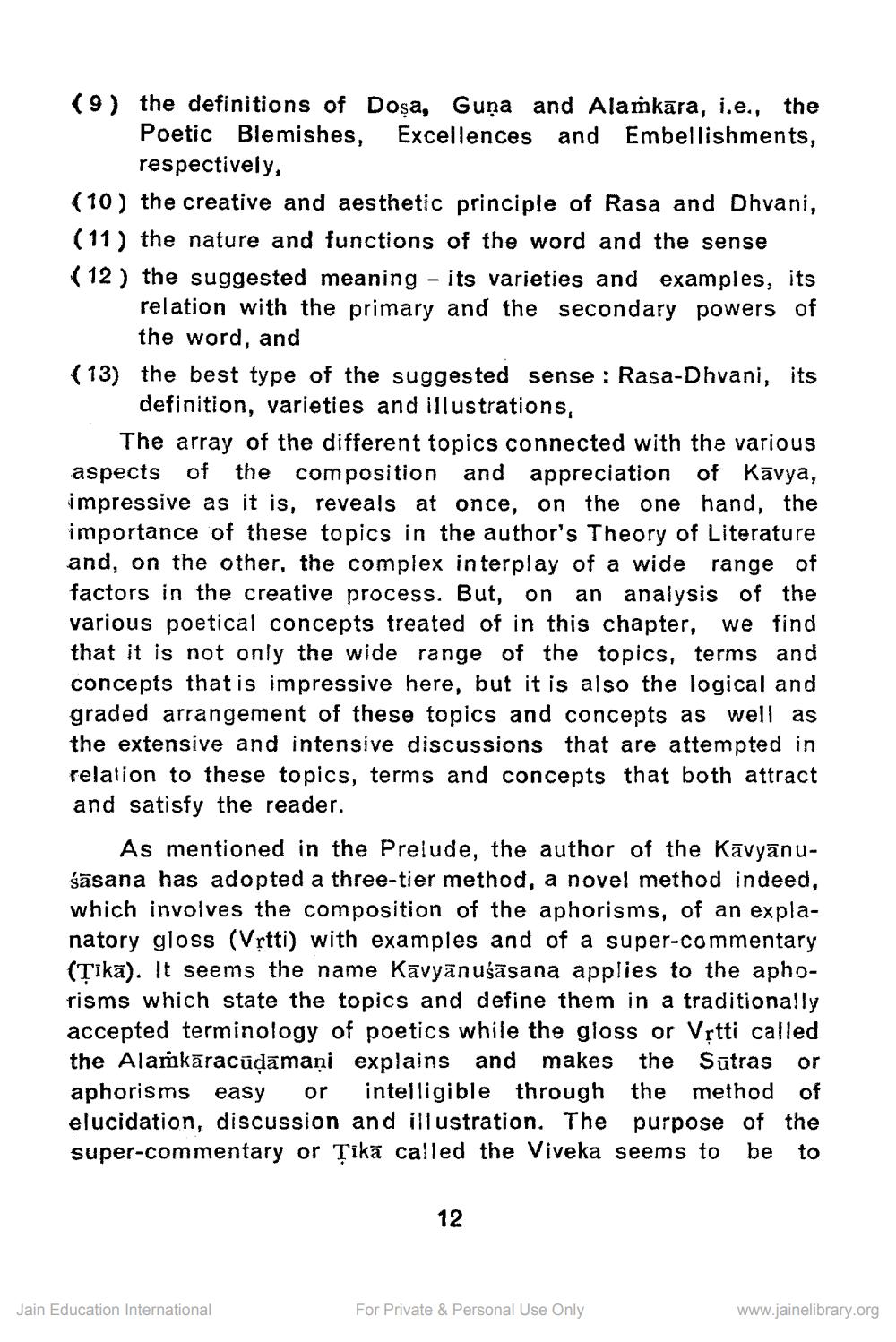________________
(9) the definitions of Dosa, Guna and Alaṁkāra, i.e., the Poetic Blemishes, Excellences and Embellishments, respectively,
(10) the creative and aesthetic principle of Rasa and Dhvani, (11) the nature and functions of the word and the sense its varieties and examples, its relation with the primary and the secondary powers of the word, and
(12) the suggested meaning
-
(13) the best type of the suggested sense: Rasa-Dhvani, its definition, varieties and illustrations,
The array of the different topics connected with the various aspects of the composition and appreciation of Kavya, impressive as it is, reveals at once, on the one hand, the importance of these topics in the author's Theory of Literature and, on the other, the complex interplay of a wide range of factors in the creative process. But, on an analysis of the various poetical concepts treated of in this chapter, we find that it is not only the wide range of the topics, terms and concepts that is impressive here, but it is also the logical and graded arrangement of these topics and concepts as well as the extensive and intensive discussions that are attempted in relation to these topics, terms and concepts that both attract and satisfy the reader.
As mentioned in the Prelude, the author of the Kāvyānuśāsana has adopted a three-tier method, a novel method indeed, which involves the composition of the aphorisms, of an explanatory gloss (Vṛtti) with examples and of a super-commentary (Tikā). It seems the name Kāvyānuśāsana applies to the aphorisms which state the topics and define them in a traditionally accepted terminology of poetics while the gloss or Vṛtti called the Alaṁkāracūḍāmaṇi explains and makes the Sutras aphorisms easy or intelligible through the method of elucidation, discussion and illustration. The purpose of the super-commentary or Tikā called the Viveka seems to be to
or
Jain Education International
12
For Private & Personal Use Only
www.jainelibrary.org




